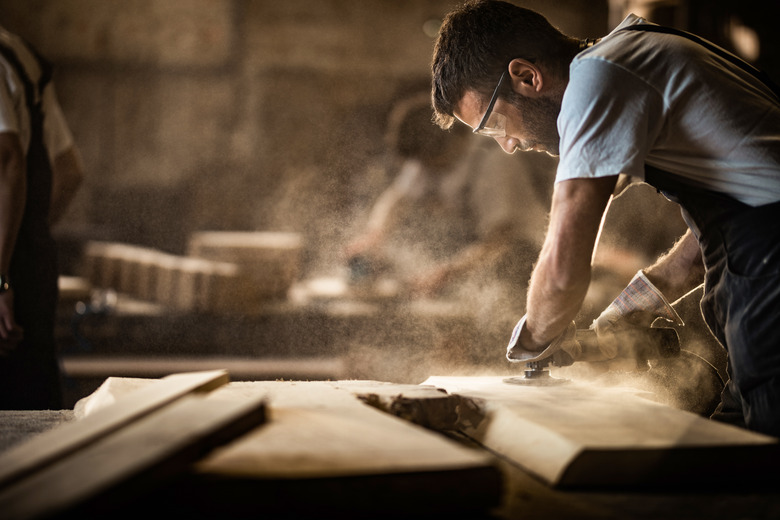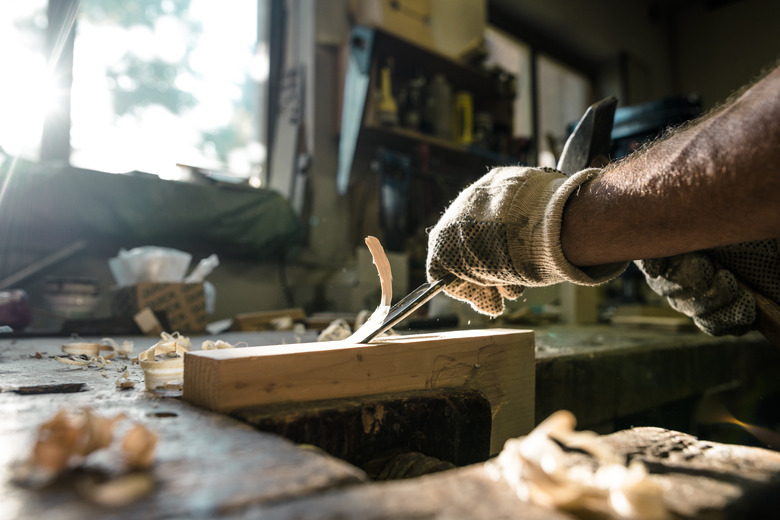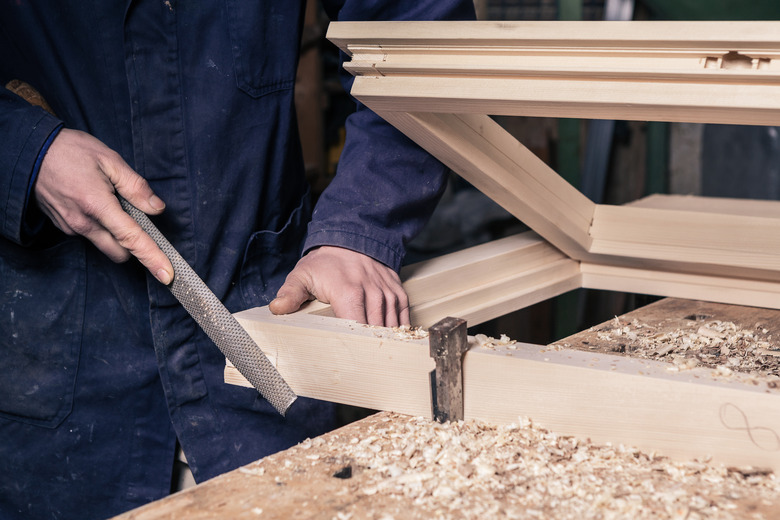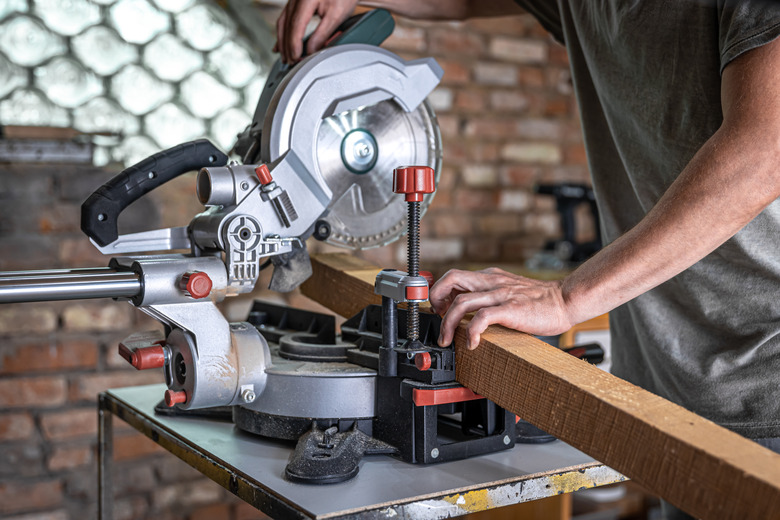4 Types Of Wood-Shaving Tools
We may receive a commission on purchases made from links.
Even if you're not an avid woodworker, a few wood-shaving tools come in handy from time to time for minor household repairs and adjustments. When a door doesn't close properly or a new piece of molding is just a little too long to fit in place, common tools, such as a hand plane and a rasp, get the job done with ease.
1. Block and Bench Hand Planes
1. Block and Bench Hand Planes
Hand planes are the type of tool you might remember learning about in wood shop, but unless you work with wood regularly, there's a good chance you've rarely used one. Offered in quite a few sizes, a hand plane is the ideal tool for shaving off small bits of wood in a uniform manner. The diminutive block plane is small enough to practically fit in the palm of your hand, which makes it useful for shaving small bits of wood off as needed, such as along the top or edge of a door that swells and no longer closes completely. A block plane usually comes with a 20- or 12-degree blade angle, making it ideal for shaving off thin curls of wood where needed.
A bench plane is the block plane's bigger, longer brother, useful for shaving down a long, straight path along the wood as might be the case if smoothing out the entire edge of a table. Numerous versions and sizes of bench planes are available, but no matter what their size, they all shave wood.
2. Chisels Paired With Hammers
2. Chisels Paired With Hammers
Wood chisels make it easy to shave small amounts of wood to a specific depth, width, or length, such as when installing hinges and other hardware for a new door. A new, sharp chisel is like a heavy-duty razor blade, able to slice through wood with just a little wiggling and some back pressure. Though you may make a little headway simply by wiggling the chisel itself, a hammer or mallet tapping on the top of the chisel handle allows for much better control and less slippage. Besides fitting into places where a plane cannot, a chisel allows you to chip, chunk, and shave wood from virtually any low angle.
3. Files, Rasps, and Rifflers
3. Files, Rasps, and Rifflers
Wood files, rasps, and rifflers are all capable of shaving down wood to a desired size, but using them creates debris more akin to sawdust than to thin wood shavings. Files have long teeth running across the width of the tool, while rasps have taller, coarser teeth, which means they'll shave off more wood and are less likely to clog in the process. Rifflers are much like rasps but are generally much smaller and often in unusual or curved shapes, which makes them useful even in small, curved areas on a project.
All of these tools are good for shaving off small bits in order to smooth the wood. As with sandpaper, these tools are available with different levels of coarseness or roughness, with the roughest type capable of removing the most wood at once.
4. Speedy Miter Saws
4. Speedy Miter Saws
Though they're more frequently used to cut wood to a specific length, power miter saws are also great for shaving off small amounts of wood from the ends of a board or a piece of trim or molding. For example, if a board is 3/16 inch too long, simply mark it at the cut line, firmly hold it down on the saw's table and against the fence, and then make the slice. It's even good for instances where you don't want to measure but to simply make quick, minuscule cuts or shavings to remove a small amount from the end of a piece.




